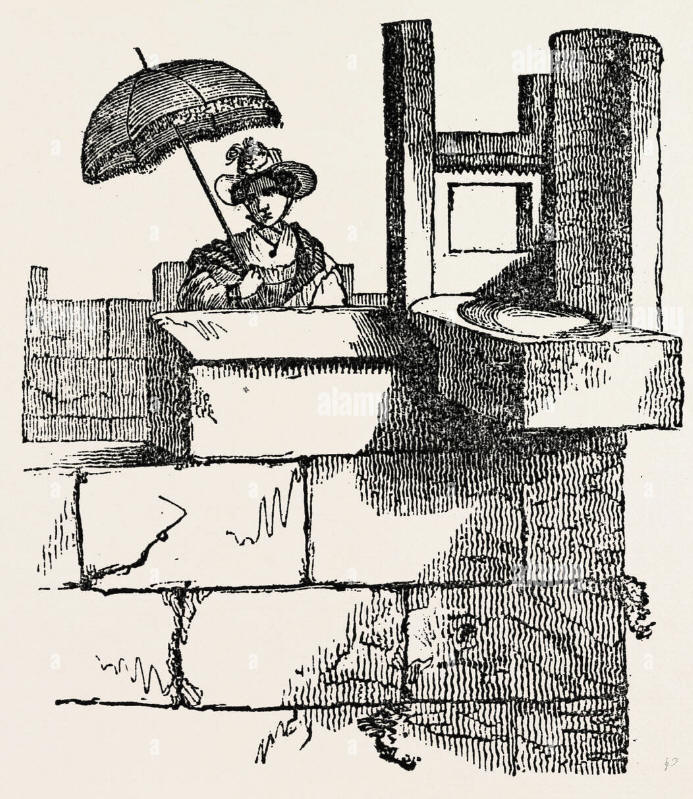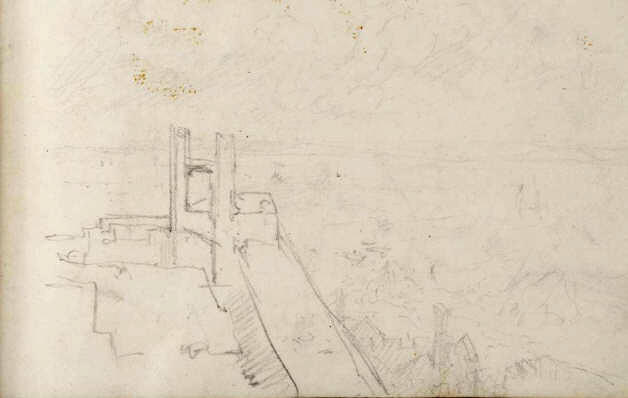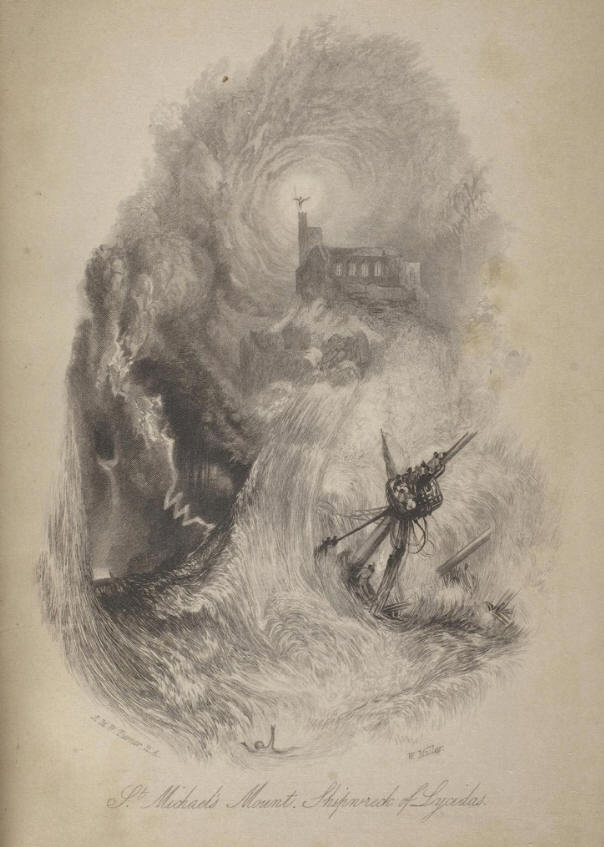|
|
| home | exhibitions | interviews | features | profiles | webprojects | archive |
|
St Michael's Chair: Ithell Colquhoun and J.M.W. Turner Rupert White
'The Living Stones', Ithell Colquhoun's much loved book on Cornwall, contains many nuggets of interesting folklore and history, not least in the rapturous penultimate chapter 'Hills of Michael', the second half of which is concerned with a solitary walk to Chapel Carn Brea near Land's End. This section, which includes a discussion of the mysterious 'Michael-force', includes some of Ithell's best, most evocative writing. The first half, which is about St Michael's Mount is more subdued but this is possibly because, after walking across the causeway, she submits herself to being part of a guided tour, something that rather cramps her style. In this first half, though, she mentions the legendary 'St Michael's Chair', or Cader Myghal, and says: 'lower down the southwestern cliff a granite slab juts out, invisible from above, where in the year 710 an apparition of the Archangel dazzled some fishermen in a boat below'. She adds 'that popularly called St Michael's Chair is only an old lantern-turret surmounting the tower'.
Current guidebooks do not mention this turret in the tower, and in the era of the internet, it seems to have completely fallen out of public consciousness. Certainly a Google search can tell you nothing about the turret-chair now, but it was hugely popular with visitors in the past and in 1842 (Illustrated Itinerary of Cornwall), for example, it was singled out for special mention by Cyrus Redding: on the top of the (church) tower, which has a fine peal of six bells and is well proportioned, at the external angle, are the remains of a gothic lanthorn in which the monks most probably kept the light for the guidance of shipping. The outer part being broken away above the base is called St. Michael's chair (Kader-migel in Cornish) and the vulgar say this was the place in which the supernatural vision sat...we ventured to stand in the famous chair but did not adventure to sit, on account of the difficulty of rising and getting round on the knees from a position in which the feet dangle over such a fearful gulf, where the restless ocean, to the most distant point of the horizon, spreads out a vast plain beneath. It is a foolhardy act and yet many, even ladies, adventure…
It should be said that the oldest mentions of the 'chayre' are by Norden (c1584) and Carew (1602), but both locate it outside the castle. Two hundred years later, though, Whitaker (Supplement to Polwhele’s History 1804) locates it in the church tower: it is a chair composed of stones projecting from the two sides of the tower battlements and uniting into a kind of basin for a seat just at the fourth western angle hanging high over the rocky precipice below. As mentioned by Courtney (1898), Southey (1829 - 'Pilgrim's Progress in Scotland'), in a somewhat misogynistic poem about the chair, also locates it in the tower**:
MERRILY, merrily rung the bells, Most fascinating of all is J.M.W. Turner's interest in the turret-chair, however. Turner (1775-1851) drew, or painted St Michael's Mount many times, most notably in an oil painting of 1834. However as early as 1811 he climbed the tower on the mount there in order to sketch St Michael's Chair. The sketch, though basic, is in the Tate collection, and is unmistakable (picture above). Turner's apparent interest in the chair, and the legends of St Michael, later resurfaces in his extraordinary illustration to Milton's 'Lycidas', which was published in 'The Poetical Works of John Milton' (1835). Entitled 'St Michael's Mount: Shipwreck of Lycidas', this engraving includes a transcendent image of the archangel standing on the tower, at the site of the chair-turret*. It is one of the most potent images of St Michael that I know of, and I feel sure Ithell Colquhoun would have approved, especially as it is reminiscent of some of her works, such as 'L'Ascension (Messiaen)' of 1974 .
*Hunt (1865) discusses the legend of St Michael's Chair, and is assured that Milton is also explicitly referencing St Michael's Mount in his poem of 1637 (See roger-pearse.com - 2021 post). Margaret Courtney (1898 p.65) recalls seeing women climbing onto the seat, despite the obvious risks of doing so. **Some 20th century commentators (eg Mais (1928) and Pevsner (1970-2nd edition)) mention the chair as being in the tower. 21.6.25 |
|
|



